Versão portuguesa aqui.
GPS 38.48530255812577, -8.955506453978241
These were the crazy years at Seagull, the legendary nightclub in Setúbal
Zé Gatto played songs that nobody liked (at least at the beginning), the then Sporting player Carlos Manuel tore his clothes just to enter a party and Miguel Sousa Tavares described it as the disco where you never knew who you were going to meet.
Zé Gatto played songs that nobody liked (at least at the beginning), the then Sporting player Carlos Manuel tore his clothes just to enter a party and Miguel Sousa Tavares described it as the disco where you never knew who you were going to meet.
In the summer there were themed parties every Wednesday.
When Carlos Manuel, star of Sporting and the National Team at the time, arrived at the Seagull disco, the doorman did not let him in. It was a summer Wednesday in 1988, so it was a themed party day. On that particular night, the motto was “The party is the best, bring the least”, so all customers had to be original (and frugal) in their wardrobe. The football player did not meet the requirements, so the rules were clear: he could not enter.
“Carlos was my friend”, recalls Alfredo Martins, the former owner of the mythical nightclub in Portinho da Arrábida in the 80s and 90s. I explained to him that the topic was bring the minimum, so there was nothing he could do. 'So what if I cut the pants and shirt off?'
That's exactly what Carlos Manuel did. He tore off his shirt, cut his pants and entered the disco.
“Once Miguel Sousa Tavares wrote the following about Seagull, in an article in ‘Expresso’ about the best clubs: ‘a club that had good music and where we never knew what we were going to find’.”
This was indeed the spirit of the Seagull. Between Praia de Galápos and Figueirinha, in the middle of the slopes of the Serra da Arrábida, the space was bought by a group of friends in 1978. But its history goes back much further.
The Seagull started out as a vacation home for a famous architect.
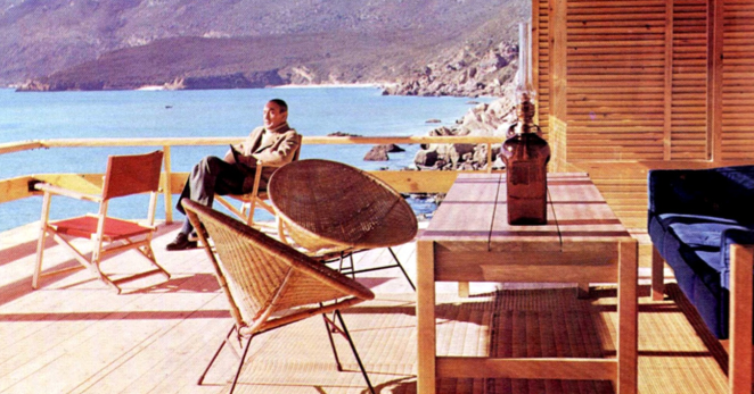
A brilliant architect and artist, he was the author of the posters in TAP advertising campaigns (1960), mentor of the construction of the Hotel Porto Santo, in Madeira, or the idea of creating a floating swimming pool at Praia do Tamariz (1967). In 1959 or 1960, Eduardo Anahory built a holiday home on a cliff in Galápos. He called it Aiola and for a long time it was a sort of romantic summer retreat for the architect and the painter Menez, with whom he dated for eight years.
But let's go back to the time when it was already called Seagull and played music until dawn. When the group of friends decided to get rid of the discotheque, at the time with a still modest 70 square meters, Alfredo Martins, 68 years old, didn't think twice about taking the space. We were in 1980.
“I had a bar, and at the time I was thinking of opening a disco. When the opportunity to buy Seagull came up, I didn't hesitate.”
Alfredo Martins paid 800 contos for the space, the equivalent today of approximately 61 thousand euros. At that time, he immediately started working on approving the license to expand the space, which would increase from 70 to 190 square meters.
“I achieved the feat of working [on the works] without closing the disco”, laughs Alfredo Martins. In fact, and despite technically being an extension, the new night space began to be built right next to the old one. We were between 1984 and 1985.
Last Saturday we closed the old disco to open the new one the following Friday. Some customers cried, saying it would never be the same again. Others said it would be better. That dawn, I gave my clients the privilege of 'departing' the old disco so we could open the new one. They took everything they wanted.”
On the following Friday, as agreed, they inaugurated the new disco. “We reopened two hours late, but we made it.” They were supposed to open at midnight, but a problem with the electrical installation caused the electricity to go down every time the sound was turned on. There they solved the problem, and at two in the morning they received the first customers.
In two days more than two thousand people entered the disco
The Seagull started out as a vacation home for a famous architect.
Before being transformed into a nightclub, the building built by the sea was commissioned by Eduardo Anahory.
If in two days more than two thousand people entered the disco, after the expansion, the Seagull had a capacity for only 350 people. “But we put a thousand and many people there. On a Friday and Saturday, more than two thousand people entered the disco. Not all at the same time, obviously.”
In the late 1980s, António Patronilho was a regular customer. In an interview, he recalls his first visit to Seagull.
“It was for a friend's birthday. We had dinner in Azeitão and went there.” They arrived around half past midnight. It was still early, so the track hadn't been set up and background music was playing.
“I remember what I think was the first song I heard there. ‘China In Your Hand’ by T’Pau.”
After that night, the 47-year-old from Setúbal became a regular customer at Seagull. That's how it was at the mythical discotheque in Arrábida — anyone who went once afterwards didn't want anything else.
“A lot of people came from Azeitão, from Sesimbra. Lisbon was our biggest source of customers. Well, but people came from all over the country — there were even those who came from the Azores on purpose”, recalls the former owner of the club, Alfredo Martins. There were also many well-known faces (or who would become well-known) who frequented the space, such as Catarina Furtado. “A number of politicians also came, but they were mostly artists.”
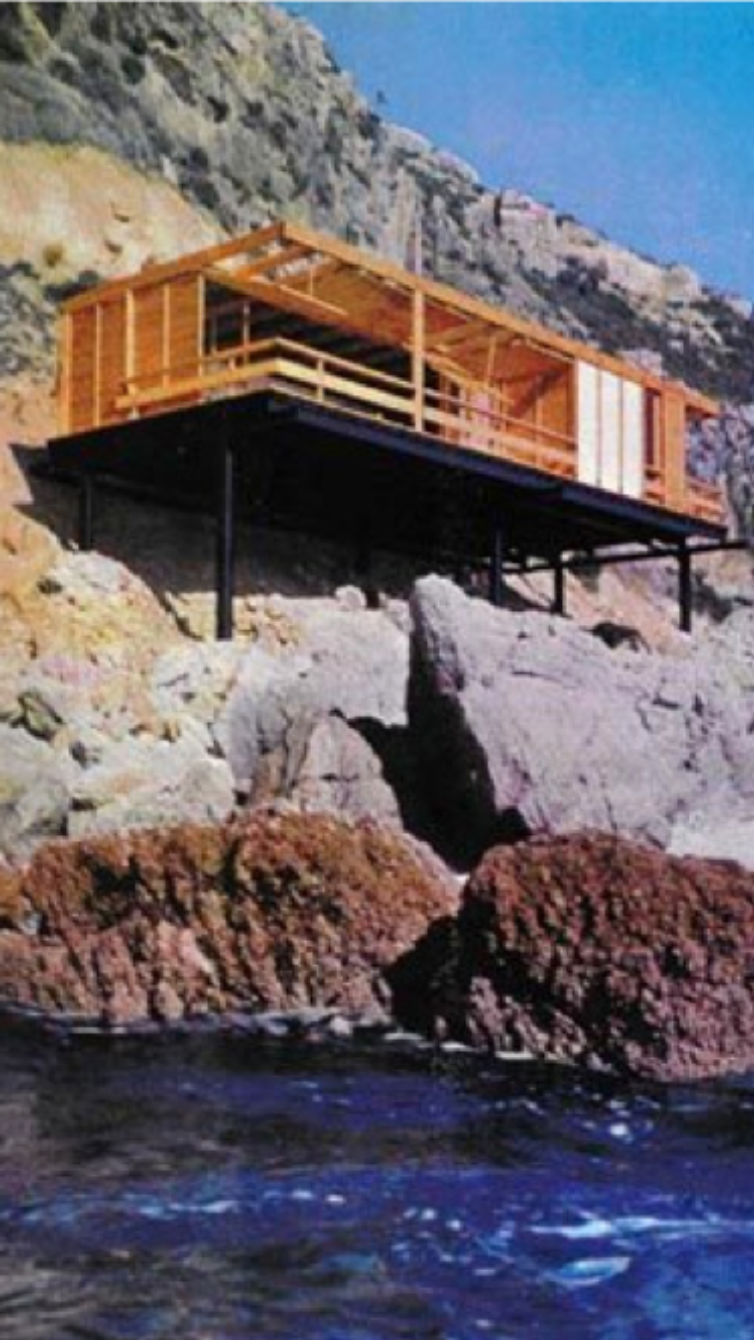
Theme parties were crazy in the summer
No excuse was needed to visit the Seagull, however there was one day in particular that no one wanted to miss. Between July 1st and September 1st, every Wednesday was dedicated to themed parties.
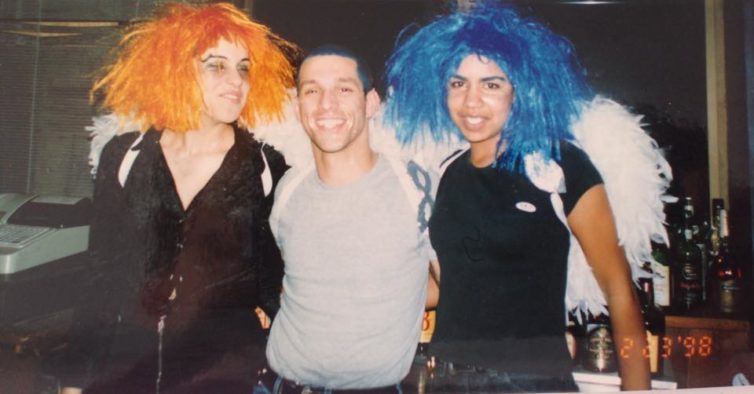
“We had a very famous party, the horse party. On that day, only those riding one could enter. Imagine what it was like to enter the Arrábida mountain range and see a hundred or so people on horseback, coming from Azeitão. It was amazing.”
From time to time, themed parties were also entitled to prizes. The best dressed man and woman of the night received distinctions, and won a weekend getaway to a city in Europe, such as London or Paris.
“There were no foam parties here. We were very posh.
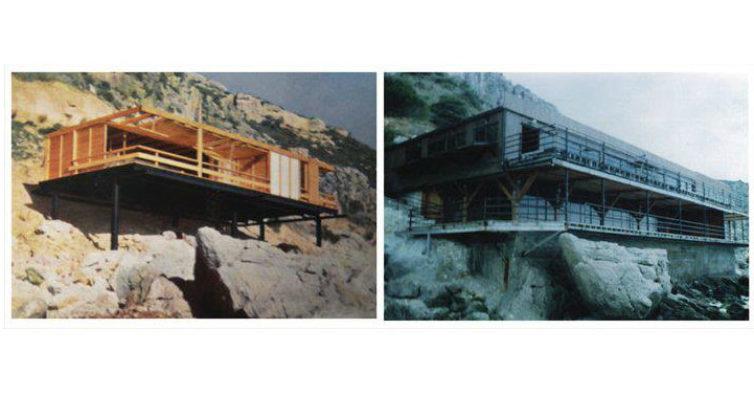
Zé Gatto was the rebel DJ who played the songs that nobody wanted to hear
Zé Gatto (not a pseudonym, his real name was José Gatto) was a DJ at Seagull between the mid-1980s and 1996. privileged location, an incredible view and wonderful parties, but at night what really mattered was the music. In this field, Zé Gatto was the master.
“He forever marked the Gaivota generation”, assures Alfredo Martins. “He was hired by me. He even went on an experiment in the Algarve [the businessman had a disco in Vilamoura for a year], but then we came up to open Seagull.”
“He was the key to success with the music he tried”, guarantees former client António Patronilho. “It wasn't easy. Contrary to what happens today, where DJs go after the public, he did the opposite. For six months, people walked off the track because they didn't like the music he was playing. But he persisted and the songs turned out to be a hit.”
Alfredo Martins corroborates António's story. “Sometimes it even crossed my mind. Customers would come and complain, 'what the hell is this music'. People have this defect, they don't like new things”. However, it ended up working: “He was stubborn. And the customers ended up loving the songs.”
Every two months, Alfredo Martins and Zé Gatto went to London to buy new songs.
“Sometimes I also went alone, when he really wanted something. But that resisted more because of the videos [in 1985 they set up a screen in the disco]. There was a Cher music video [“If I Could Turn Back Time,” 1989] that allowed everything in a trance. When [the singer] sat on top of the cannon, the boys went into ecstasy.
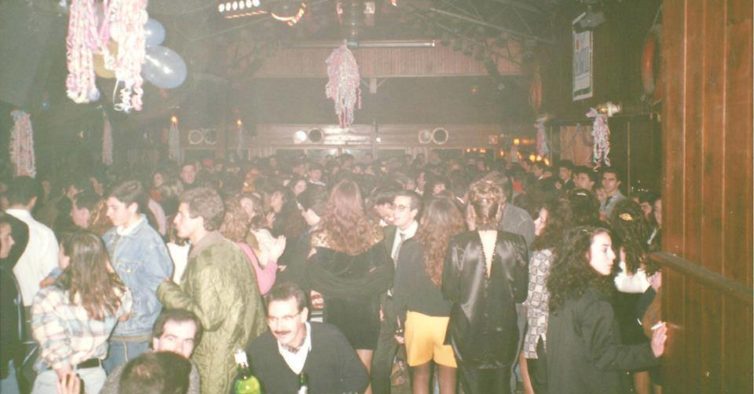
“It was a brilliant thing. The disco was fabulous, but the restaurant was something that stuck with me here in goto”
Between 1994 and 1995, Alfredo Martins expanded the Seagull for the second time. From 190 square meters to 333, now including a restaurant on the ground floor. The disco moved upstairs.
“It was a brilliant thing. The disco was fabulous, but the restaurant was something that stuck with me here at goto. A very interesting glamor was created at the time. It was just nice people, always nice people.”
António Patronilho remembers those times well. In fact, a few years later he was invited to work at the disco as a DJ.
“At the time I was in a bar in Azeitão [1997]. I was invited because the music was changed. More 'dance music' was playing, and they called me to go back to the pop-rock style."
This was the true spirit of disco. The change came to “Revista Inédita”, which wrote about the biggest national clubs. In the December 1997 edition, it read: “The house is the same, the location too and we don't even talk about the view because it is in fact unique. The Seagull felt the need to take a walk and he did. The music is different but clearly within the standards that space requires in order to remain a dream.”
“Galápagos Desolation” or “The Last Flight of the Seagull”
On November 11, 1998, the cover of “Setubalense” left the region in shock. “Desolação em Galápos”, read in bold letters on the front page of the newspaper, where there was also a desolate image of the completely destroyed building. Inside, the article about the Seagull's last flight reported what had happened the previous morning. A gas leak caused an explosion and consequent fire, which left the Seagull “reduced to an amalgam of iron and twisted plates, in the midst of a lot of smoke that rose from the wreckage (...)”.
At 8 am on Monday, November 10, 1998, manager Pedro Silva opened the Seagull's door. The disco was closed since Saturday, the restaurant still served meals on Sunday.
“When my manager pressed the light switch, the gas was already seeping into the pipe and it was thrown onto the road”, remembers Alfredo Martins. Despite the impact of the explosion, which dragged him for three or four meters, Pedro Silva went to the District Hospital of Setúbal by his own means.
“He didn't have a single wrinkle,” recalls Seagull's former owner. At the time, the 35-year-old manager had first and second degree burns that, fortunately, left no visible marks.
Nobody wanted to believe what had happened. “Setubalense” describes the astonished looks of employees and clubgoers, “who looked at what was left of the building, not seeming to believe what was in sight: the Seagull had burned”.
The fire was brought under control by firefighters at 9:29 am, approximately an hour and a half after the explosion. Unfortunately, and as much as Alfredo Martins had tried to contradict this, the sentence had been dictated. It was the end of the Seagull.
António Patronilho was in the US the night the disco burned down. Received the news from a colleague. “The woman called him and said it was on fire.” So many years later, the man from Setúbal still has a black T-shirt that reads: “Seagull, 1978-1998 — golden years”.
Alfredo Martins never gave up on reopening the Seagull
“What made me extremely proud and an enormous desire to maintain that house was the happiness of the customers. It was a very interesting coexistence, very transparent.”
After the explosion, the rebuilding of the Seagull was blocked by the authorities. “It was a legitimate basic right, but all entities opposed it: the Institute for Nature Conservation and Biodiversity, Civil Protection, even the Setúbal City Council. It's almost anecdotal.”
“The entities claimed that the object of the license no longer existed. There was a lot of fear in that area, that stones would fall down the mountain. None ever fell, but whatever. I spent so many years fighting for this. Does not make sense."
Almost 20 years after the fire, the disappointment in Alfredo Martins' voice is still visible. In fact, it was only in 2013 that he was forced to give up. It was at this point that the court case ended.
“In the first instance I won, in the relationship I won, in the supreme administrative court I lost. It was a very rare thing — when the previous two are favorable, the administrative court rarely goes against that decision. The fava fell to me. Me and my clients.”
Every year there is a Seagull tribute party
Since 2008, annual parties have been held in memory of the mythical disco. The day depends on weather conditions and music festivals, but it generally falls between the last week of May and the first week of June. The last two editions took place in Parque Urbano de Albarquel, in Setúbal.
The event is a success, and every year it has gathered between 2,000 and 2,500 people. From 11 am to 6 am, the club's former patrons — some already with children old enough to join the party — dance to the sounds of hits played at Seagull.
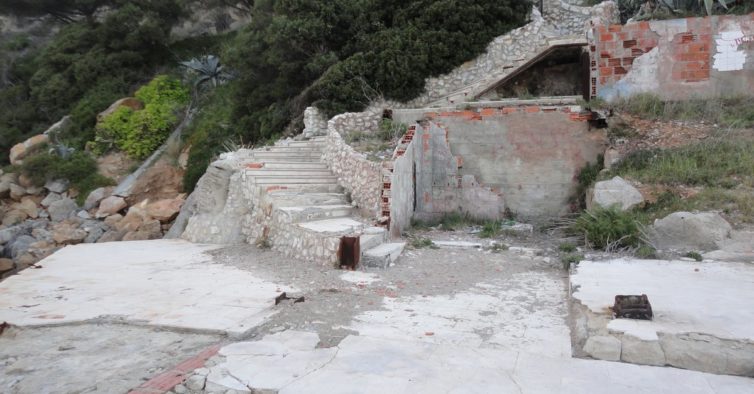
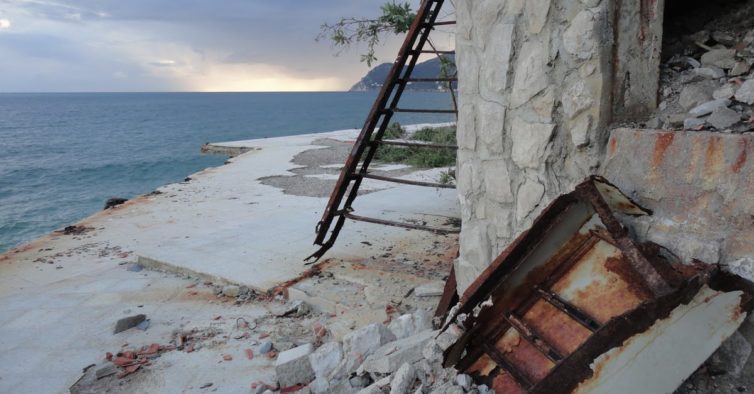
Today, the Seagull nightclub is reduced to a platform.
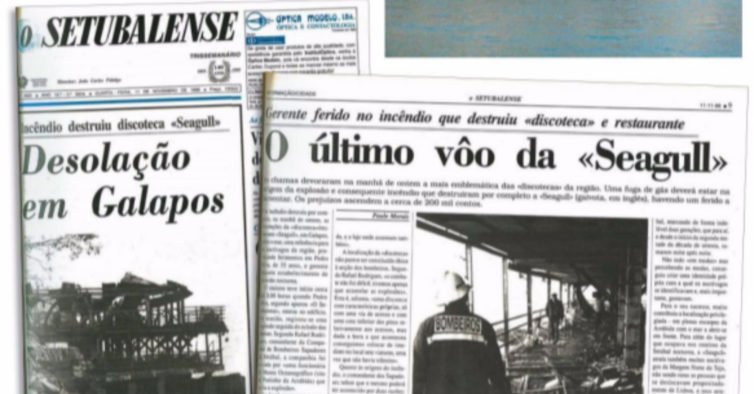
“At 8 am on Monday, November 10, 1998, manager Pedro Silva opened the door to the Seagull nightclub. The disco was closed since Saturday, the restaurant still served meals on Sunday. When he pressed the light switch, there was a huge explosion. Later it would be known that it had been a gas leak. Despite being dragged for three or four meters, Pedro Silva was left with no visible marks.”
The two pages of the newspaper were published by the newspaper “Setubalense” in the edition of November 18, 2015.